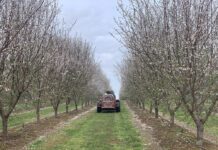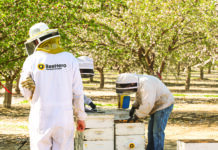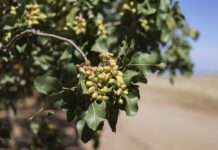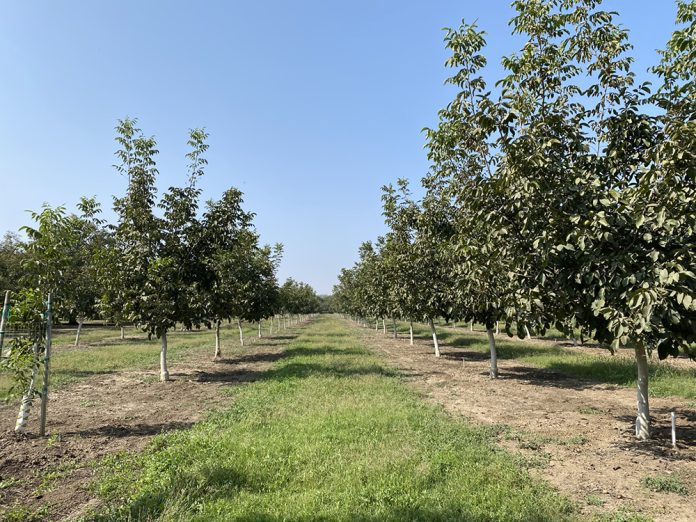
It starts with a production problem. Then a field trial becomes a priority.
Tree nut growers and crop consultants want to know if the genetics of a certain rootstock can overcome a specific challenge where it is planted.
Nematodes, diseases and salinity, to name a few, are challenges that can drag down production in tree nuts and field trials help when valuating new rootstocks to determine if they can tolerate or resist various issues in the soil.
The purpose behind a rootstock or variety trial is to evaluate them under realistic growing conditions. Field trials are used to see plant responses to environmental conditions and diseases which cause production issues.
Sites with specific problems are chosen to test rootstocks to determine if their genetic combinations can overcome or tolerate that condition. Trials are also replicated for larger data collection.
With the tremendous diversity of germplasm available, new rootstocks are developed to address specific conditions that affect tree growth and health. New rootstocks can come from university researchers or industry, or they may be joint projects. For example, two walnut rootstocks were developed by the UC Davis Walnut Breeding Program in a joint effort by UC and USDA. Another rootstock, Vlach, was an industry product.
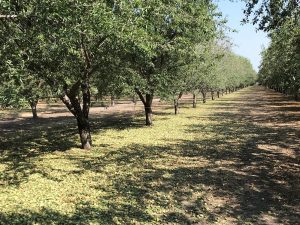
Luke Milliron, UCCE orchard systems advisor in Butte, Glenn and Tehama counties, has been involved in various field trials for rootstocks and varieties to determine which genetic combinations can overcome production challenges in the field. He said tree nut growers, industry groups, including Almond Board of California, California Walnut Commission and California Pistachio Research Board, and University researchers typically identify an issue with tree health or production and initiate a field trial to determine if another genetic combination can overcome that issue.
UC researcher Thomas Gradziel, in a report of his almond rootstock breeding program to Almond Board of California, said the UC breeding program has developed an unprecedented range of interspecies hybrid rootstocks that possess the required traits of nematode, disease resistance and salinity tolerance with a diverse genetic background that promotes greater orchard resilience under changing production and regulatory climates.
In his report, Gradziel said 12 ongoing trials are evaluating resistance/tolerance to regionally important orchard afflictions, including nematodes, soil salinity, reduced quantity and quality of irrigation water and oak root fungus.
Milliron said a proposal for a field trial starts when specific challenges to tree growth or health are recognized by researchers and growers.
UC sites, including Kearney and Shafter research stations have been used for many rootstock and variety trials, but Milliron said he values landowners who are willing to undergo the inconvenience of a long-term trial and have hosted trials because they believe in ongoing industry improvement.
“They are also curious to see if a problem can be overcome with different genetics,” Milliron said. “It takes growers who are willing to plant new rootstocks and find their strengths and weaknesses.”
Almond, pistachio and walnut rootstocks are bred to grow in different soil types and conditions and provide the best anchorage, vigor and resistance or tolerance to soilborne pests and diseases. However, no individual rootstock is tolerant of all factors that impact walnut production. The strengths and weaknesses of each rootstock should be considered in the context of a specific orchard location.
Trials of new rootstocks are initiated to solve the problem, recognizing, however, that it may take years to prove the genetics of the rootstock will improve tolerance or resistance to conditions where it will be planted.
“We look at what is the greatest risk of failure,” Milliron said. Trials test rootstocks at sites with known risks of failure.
Rootstock trials are the endpoint of a selection process, Cliff Beumel, president of Agromillora California Nursery, said. Nurseries and university researchers begin the process with DNA marker assisted breeding. Development of this technology assists with choosing the genetic material sought by the breeder.
“You can go from 10,000 combinations to 100 much faster with this technique,” Beumel said. If nematode resistance or tolerance is the sought-after trait, he said seedlings will be planted in infested soil to see which ones survive. This selection process might go through several rounds before the most promising breeding combinations are chosen for a field trial.
He said the nursery field trials are designed to be as close as possible to commercial production and are also replicated. Typically, there will be four to five rows planted across a field to avoid oddities in planting sites. Beumel said where there is some duplication in trials, the goal is wider collection of data in replicated trials that can show statistical differences.
Once the rootstocks and variety combinations are in the ground, the researchers and advisors who planned the trial are in it for the long haul, particularly with later maturing walnuts and pistachios.
The No. 1 thing they watch is tree survival as the establishment phase is critical in rootstock trials. Incompatible grafts, anchorage and crown gall all threaten tree viability. Milliron said researchers also monitor rootstock growth, measuring rootstock circumference which indicates tree vigor.
“One of the main things we measure is shade on the ground, size of canopy,” he said. “That reflects the suitability of the rootstock where it is planted.”
Over the next few years of the trial, Milliron said anything that leads to increased risk of mortality of a rootstock is tossed. Once the trees begin bearing, yield and nut quality data collection begins. Collection of that data is done over four to five years, but he said he likes to follow up, walk the blocks and be on the lookout for disease indicators that may show up in later years.
“The story can change,” he said, citing older trials where rootstocks showed promise in the early years, but developed problems later.
“Some of these looked okay at year six, but not at year 20.”

Cecilia Parsons | Associate Editor
Cecilia Parsons has lived in the Central Valley community of Ducor since 1976, covering agriculture for numerous agricultural publications over the years. She has found and nurtured many wonderful and helpful contacts in the ag community, including the UCCE advisors, allowing for news coverage that focuses on the basics of food production.
She is always on the search for new ag topics that can help growers and processors in the San Joaquin Valley improve their bottom line.
In her free time, Cecilia rides her horse, Holly in ranch versatility shows and raises registered Shetland sheep which she exhibits at county and state fairs during the summer.







